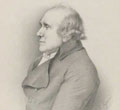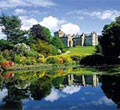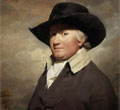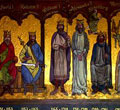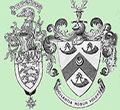Hunters Hall of Fame
C
Christopher Hunter (1675-1757), physician and antiquary, born in July 1675, was the only son of Thomas Hunter of Medomsley, Durham, by his second wife, Margaret Readshaw.
He was educated at the free grammar school of Kepyer in Houghton-le-Spring, Durham. In 1692 he was admitted pensioner of St. John's College, Cambridge, and became a favourite pupil of Thomas Baker (1656-1740), whose sister Margaret was the wife of John Hunter, Christopher's elder brother. From this connection he derived a taste for antiquarian pursuits.
He took the degree of bachelor of medicine in 1698, and soon afterwards settled in practice at Stockton-on-Tees. He had a license, dated 7 Oct. 1701, from Dr. John Brookbank, spiritual chancellor of Durham, to practise physic throughout the diocese of Durham.
On 1 Aug. 1702 he married, at Durham Abbey, Elizabeth, one of the two daughters and co-heiresses of John Elrington of Espersheales in the parish of Bywell, Northumberland.
A few years later he removed from Stockton to Durham, a place much more congenial to his social and antiquarian tastes. He became a regular frequenter of the fine library of the dean and chapter, apparently he spilled a bottle of ink over a valuable copy of Magna Carta, which resulted in him being banned from the library.
He discovered coins, excavated altars, and traced roads and stations at Lanchester and Ebchester. To the success of his researches on Roman ground, the altars preserved in the Cathedral Library at Durham bear solid testimony; while his valuable local knowledge was of the highest use to Horsley in compiling his 'Britannia Romana' (pp. 250-91), and to Gordon in his 'Itinerarium Septentrionale' (Addenda, p. 13). He also rendered considerable assistance to Wilkins in his 'Concilia', and he contributed materials for Bourne's 'History of Newcastle-upon-Tyne.'
In April 1743 Hunter circulated proposals for printing by subscription in two quarto volumes a parochial history of the diocese of Durham, collected from the archives of the church of Durham, the chancery rolls there, and the records in the Consistory Court. With a view probably to the completion of this work he was entrusted by Thomas Bowes of Streatlam with the valuable Bowes manuscripts. Hunter's intended history, however, never saw the light. His publications were confined to an anonymous reissue, with considerable additions, of Davies's 'Rites and Monuments of the Church of Durham,' 12mo, 1733, four papers in the 'Philosophical Transactions,' and 'An Illustration of Mr. Daniel Neal's History of the Puritans, in the article of Peter Smart, A.M. . . . from original papers, with remarks,' 8vo, 1736, also without his name.
In the spring of 1757 Hunter retired from Durham to his wife's estate at Unthank in the parish of Shotley, Northumberland, where he died on 12 July of that year, and was buried in Shotley Church. His wife survived him, together with his eldest son, Thomas. John, his younger son, and Anne, an only daughter, died long before him.
Hunter's manuscript topographical collections in twenty-one closely written volumes in folio were after his death offered for sale by his executors. Two volumes of transcripts from the chartularies of the church of Durham, written in an extremely neat hand, and a bundle of loose papers, were purchased by the dean and chapter of Durham for twelve guineas; but Thomas Randal, one of the executors, perceiving that the dean and chapter were likely to become the purchasers of the whole, for some reason stopped the sale of the remaining volumes. Another volume was in the possession of the family in 1820, but many appear to be irretrievably lost, Surtees (Durham, vol. i. pt. ii. p. 161) pays a high tribute to the value of Hunter's labours. The greater portion of Hunter's library was sold to John Richardson, book-seller, of Durham, for about £350. His cabinets of Roman antiquities and coins were acquired by the dean and chapter of Durham. Hunter was elected F.S.A. on 15 Dec. 1725.
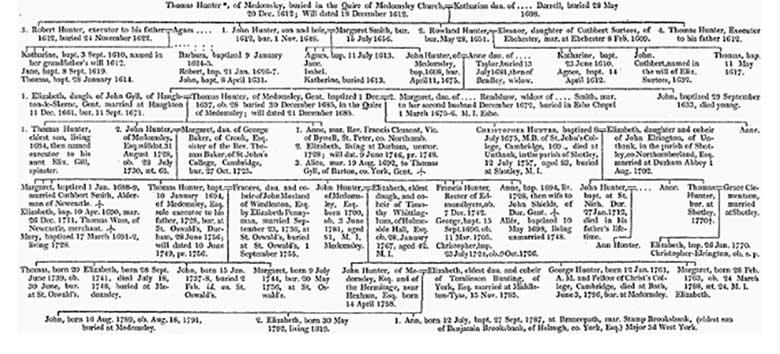
Part of the Hunters of Medomsley family tree.
The Hunter estate in Medomsley is said to have been in the possession of the family since 1584. The parish of Shotley is about one mile away.
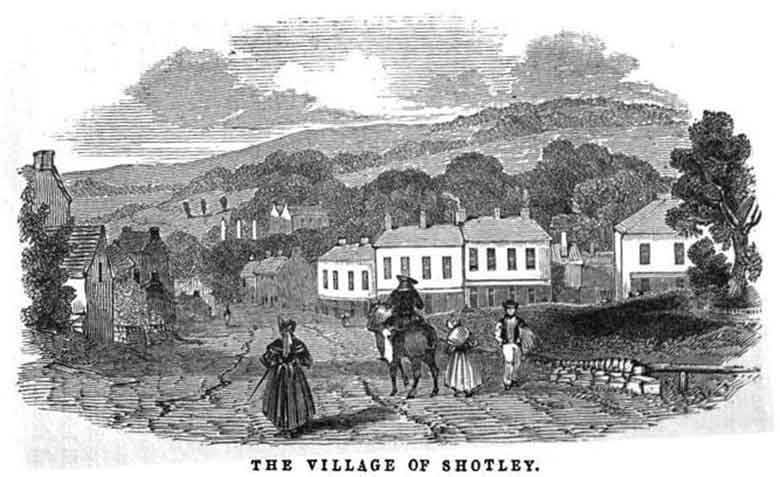
Christopher was buried in Shotley church, with this epitaph:
"Here lye the remains of
Christopher Hunter, M.D.
a learned and judicious Antiquary and Physician
He was the only child of Thomas Hunter,
of Medomsley, Gent. by Margaret his second wife.
He married Elizabeth one of the daughters
and co-heiressess of John Elrington of Aspershields, esq.
by whom he had two sons and a daughter.
He died 13th of July, An. Dom. 1757,
in the 83d year of his age."
I (editor) have a fair collection on Medomsley and area so will be opening a page dedicated to them. To anyone who has done research in that area, input is welcomed always.
Sir Claudius Stephen Hunter (1775-1851), lord mayor of London, born at Beech Hill, near Reading, 24 Feb. 1775, was youngest son of Henry Hunter (1739-1789) of Beech Hill, Berkshire, a barrister, by Mary, third daughter of William Sloane, the great-nephew of Sir Hans Sloane, bart. His sister Mary (d. 1847) was second wife of William Manning, M.P. for Leamington, and was thus mother of Cardinal Manning.
He was educated at Newcome's school at Hackney, and afterwards by a protestant clergyman in Switzerland. He entered as a student of the Inner Temple, but was subsequently articled for five years to Beardsworth, Burley, & Moore, solicitors, of Lincoln's Inn.
He commenced business in 1797 as a solicitor in Lincoln's Inn, in partnership with George Richards. A wealthy marriage in the same year proved of assistance, and his practice grew very large. He was solicitor to the commercial commissioners under the income duty acts, the London Dock Company, the Royal Institution, the Society for the Promotion of Religion and Virtue and Suppression of Vice, the Linnean Society, and the Royal Exchange Assurance Company.
In September 1804 he was chosen alderman of the ward of Bassishaw, and then relinquished the general management of his business to his partner.
Two years afterwards he was appointed lieutenant-colonel of the Royal east regiment of London militia (becoming colonel 10 Jan. 1810), and devoted much time to his regiment, which was occasionally called upon to serve at a distance from the metropolis.
In June 1808 he was elected sheriff of London. He retired from business as a solicitor on 11 Jan. 1811, and was called to the bar.
On 9 Nov. 1811 he became lord mayor of the city of London, when he revived all the ancient ceremonies worthy of renewal, and his pageant was exceptionally magnificent.
He was created a baronet on 11 Dec. 1812 and made an honorary D.C.L. of the university of Oxford 23 June 1819. In 1835 he removed from the ward of Bassishaw to that of Bridge Without, and at the time of his death was the 'father of the City.'
He died at Mortimer Hill, Reading, Berkshire, 20 April 1851.
His first wife, whom he married 15 July 1797, Penelope Maria, only daughter of James Free, having died in 1840, he married again, on 25 Oct. 1841, Janet, second daughter of James Fenton of Hampstead; she died at Cambridge Terrace, Hyde Park, 21 Jan. 1859. By his first wife he had two sons and a daughter.
His elder son John (1798-1842) left a son, Claudius Stephen Paul, who succeeded his grandfather in the baronetcy.
[Foster's Baronetage; Times, 11 Nov. 1811, p. 2 ; European Mag. September 1812, pp. 179-184, with portrait; Grent. Mag. July 1#51, pp. 88-90; Illustrated London News, April 1-851., p. 329.]
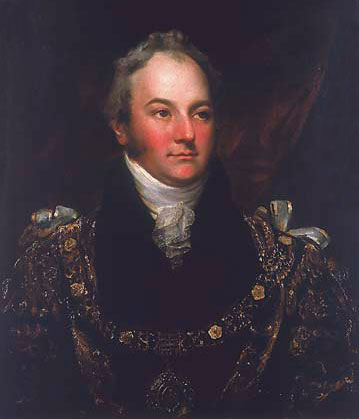 Sir Cladius at the age of 38, with chains of office as Mayor of London.
Sir Cladius at the age of 38, with chains of office as Mayor of London.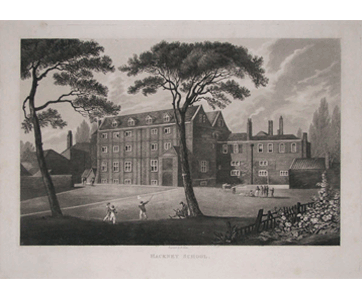 Other pupils of Newcome's school, at that time, included Arthur Middleton and Thomas Nelson, Jr., who were later to be known as part of the group called the "Founding Fathers of the United States".
Other pupils of Newcome's school, at that time, included Arthur Middleton and Thomas Nelson, Jr., who were later to be known as part of the group called the "Founding Fathers of the United States".
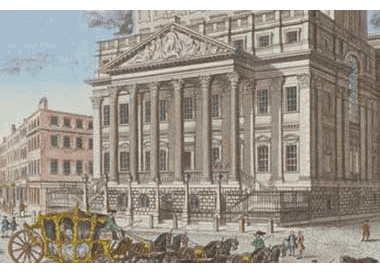 The Mansion House for the Lord Mayor around that time.
The Mansion House for the Lord Mayor around that time.
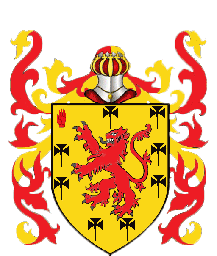
Armorial bearing of Sir Cladius Stephen Hunter
registered 1812
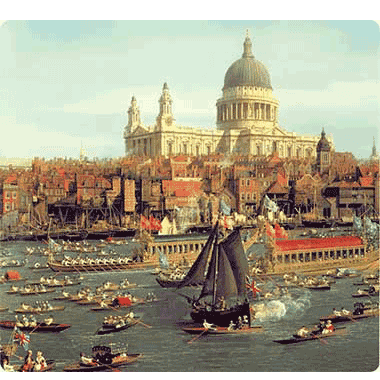 Cladius made sure his inauguration procession was one to remember for a long time.
Cladius made sure his inauguration procession was one to remember for a long time.
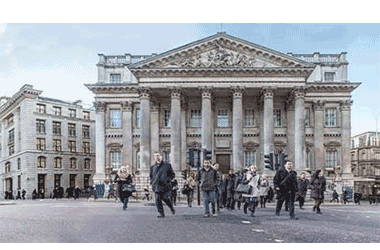 How the mansion house looks today.
How the mansion house looks today.

